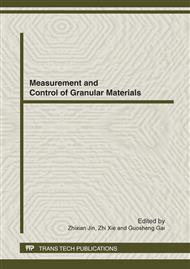p.180
p.184
p.188
p.192
p.196
p.200
p.203
p.207
p.212
Environmental Risk and Recoverable Potential Evaluation of Heavy Metals in the Sludge from the Industrial Wastewater in China
Abstract:
During the treatment of wastewater from metal production and processing industries, a huge volume of sludge is generated. Sludge from the industrial effluent is usually abandoned or used in agriculture as fertilizer due to the presence of phosphorus, potassium and other inorganic elements, or landfilled. In our work, metals concentration in the sludge from different industries of multi-area, China, was determined and the recoverable potential was assessed. It indicated that the sludge from electroplating, PCB, leather treatment, metal smelter and stainless steel industries was restricted its use as a fertilizer because that the sludge had too high concentration of toxic heavy metals. Meanwhile, it was seen that Ag, Cu, Co, Ni, Pb, Zn contents in the sludge from some industries had exceeded the minimum standards of industrial smelting and had the value recycled. It is imperative and beneficial to find a low-cost, environmentally friendly recycling technology to recover the metals in sludge from industrial wastewater.
Info:
Periodical:
Pages:
196-199
Citation:
Online since:
April 2012
Authors:
Price:
Сopyright:
© 2012 Trans Tech Publications Ltd. All Rights Reserved
Share:
Citation:


